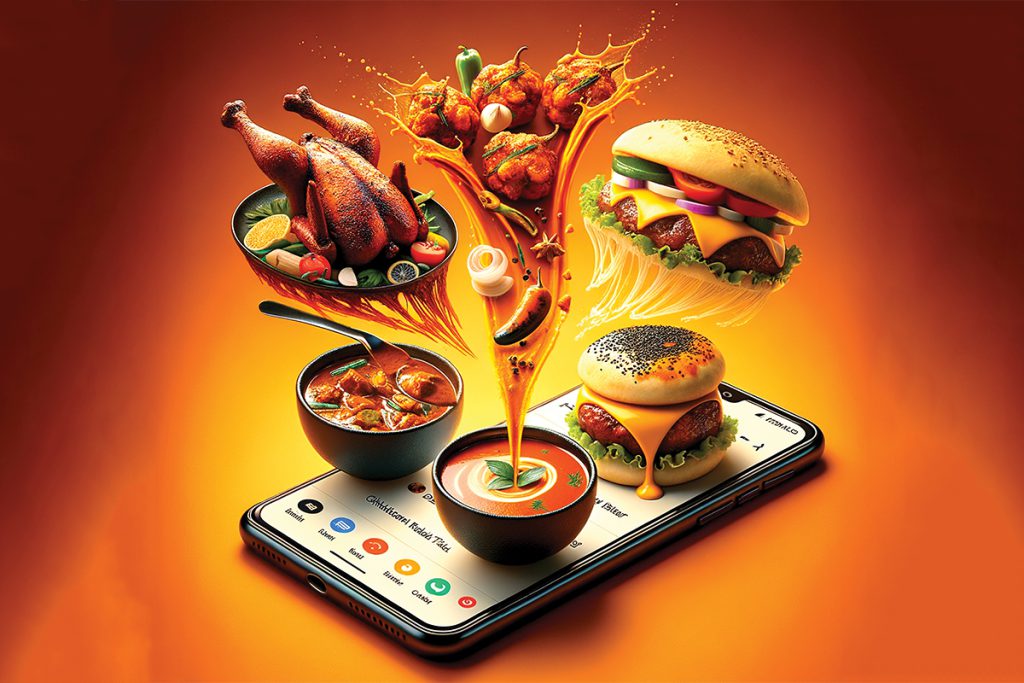In a world racing along at breakneck speed, quick commerce is proving to be a speedy success for consumers and companies alike
Words by Hitanshi Kothari

27th November, 2022. I still remember the date clearly.
That’s because it was the day my mum turned a year younger, and I was flying into a state of increased panic as the clock inched closer to midnight, as I had somehow completely forgotten to plan anything for her birthday.
I was like a cat on a hot tin roof at 11:00 PM, out of answers and short of ideas. Driven by desperation, I fired up my phone, not to mindlessly doom-scroll on Instagram or laugh at the latest piece of mindless humour on Twiiter, but in the hope that somewhere out there on the internet, a miracle could be delivered.
And amazingly, it was. In 16 minutes, no less.

You name it, and a nameless hero landed up on my doorstep with everything I needed, be it confetti, balloons, party poppers, and more. Suffice to say my mother was surprised, but perhaps no one was more surprised in the room than me, and I have never looked back when it comes to quick commerce.
The rapid rise of quick commerce
In today’s fast-paced world, quick commerce fills a critical market gap, with the market valued at USD 3.34 billion in 2024, and expected to reach a value of USD 9.95 billion by 2029, growing at a CAGR of greater than 4.5%. As a working woman (or man), Blinkit, Zepto, or Swiggy Instamart is my best friend, with these platforms delivering everything from pins to PlayStations and everything in between.

And this ordering pattern has steadily grown in momentum over the years, with consumer behaviour perhaps irrevocably changing after the pandemic meant we could not turn to our usual kirana stores.
A lot has changed since then, with a slew of players delivering groceries by the cartful, including the delightful delivery of free dhaniya after a desi mother expressed disappointment at not getting some of this invaluable herb free with her grocery purchase. After all, are you even Indian if you don’t haggle for some free extras? But it’s not just online groceries, since non-grocery items make up about 15-20 per cent of all quick commerce sales. Ask me, the forgetful child who orders birthday saaman at the last minute.
Delivering delight
For many of the players in the market, quick commerce has been an easy ticket to growth.
For instance, Blinkit’s revenue grew almost 3x for the year ended March 31, 2024, standing at Rs 2,301 crore against Rs 806 crore in the last fiscal. Their rivals are doing perhaps even more impressively, with Swiggy Instamart’s earnings surging from Rs 5,800 crore in FY23 to Rs 7,800 crore in FY24, and Zepto, while not as impressive, saw its revenues in FY23 swell 14X to Rs 2,024 crore from Rs 142.4 crore a year ago.

Little wonder that a retail giant like Reliance Industries is looking to make their foray into the space, with Tata already being an incumbent in the space thanks to BigBasket. Sure, most of the players in the space are bleeding money. Swiggy’s losses stood at Rs. 1,730 Cr in FY2023-24, with others not doing much better.
Regardless, that has done little to dampen the mood of these industry biggies though, as they chase the rocket fuel for growth that can take them into the stratosphere. Fuelled by consumers looking for instant gratification and quick fixes, quick commerce is quite simply here to stay.
After all, I’m sure I’m not the only one to forget a loved one’s birthday, and have a last-minute need that needed to be fulfilled, and I’m certain this won’t be the last time I turn to Swiggy and the likes for deliverance.


